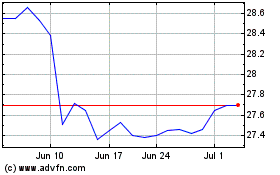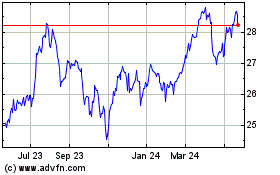Many emerging markets have lost their momentum in 2013 and
have largely underperformed since the beginning of the year. In
such a scenario, investment in the frontier market has become one
of the most alluring options among investors seeking strong
returns.
What is a Frontier Market?
Over the past two years, the frontier markets, such as the
Middle East, parts of Southeast Asia, South America, and
sub-Saharan Africa, are gaining popularity over the developed and
developing markets (Time for Frontier Markets ETFs?).
Frontier markets are basically nations less established and
developed than emerging nations. They have lower market
capitalization and liquidity when compared to the more developed
emerging markets, and they are generally at the initial stage of
economic, political and financial development.
Rationale Behind Investment
Additionally, the region is characterized by positive
demography, unleveraged balance sheets and strong consumption
demand. The rising middle class population in the region has
resulted in a strong demand for consumer products as well.
The market's young and expanding population is increasingly
attractive. Frontier markets represent around 6% of the world’s GPD
and 22% of the world population, while approximately 60% of their
citizens are under the age of 30.
The population in the region is not just large and young, but
they are also a cheaper labor force than those found in developed
and emerging markets. Additionally these markets are generally rich
in natural resources and have in demand products in this regard
(Time to Buy Emerging Market ETFs?).
It is expected that the region will grow at an average of 5%
through 2013-2016 on the back of more external inflows and decent
commodity demand. So, those seeking long-term high returns should
look to invest in frontier market ETFs (4 Excellent Dividend ETFs
for Income and Stability).
Risks of Investing in Frontier Market
Though the frontier market provides a good investment strategy
for those looking for lofty returns over the long term, a high
level of volatility and poor liquidity are risks that run high in
these markets. High inflation levels also pose a risk of investing
in these economies, as many have trouble keeping this under
control.
Frontier Market ETFs
Still, we believe that many frontier markets offer up exciting
opportunities to those willing to take on some risk. In light of
this, we highlight three ETFs below which target the frontier
markets around the world:
PowerShares MENA Frontier Countries ETF
(PMNA)
PMNA is based on the NASDAQ OMX Middle East North Africa index,
which seeks to track the performance of liquid companies in MENA
(Middle East and North Africa) frontier countries.
In terms of country exposure, United Arab Emirates (26.5%),
Kuwait (24.4%), Egypt (21.3%) and Qatar (20.6%) account for the
majority of asset holdings.
The fund is heavily tilted towards the financial sector that
makes up about 62% of the assets (Banking ETFs: Laggards or
Leaders?). The top three holdings include National Bank of Abu
Dhabi, Emmar Properties and National Bank of Kuwait.
The fund launched in September 2008 and manages assets of $16.2
million currently. PMNA charges fees of 70 basis points per year
and has a dividend yield of 2.15% as of now. The fund generated a
return of 5.63% in the year-to-date period.
iShares MSCI Frontier 100 Index
(FM)
FM – launched in September 2012 – is the newest product in this
group. It is based on the MSCI Frontier Markets Index, which is
composed of 100 largest securities from the eligible universe,
ranked by float adjusted market capitalization.
The fund manages an asset base of $103.9 million and invests
this asset base in a holding of 102 securities.
In terms of country exposure, Kuwait (27.3%), Qatar (16.6%) and
the Nigeria (13.6%) are in the top three spots. Like PMNA,
financials dominates in terms of sector exposure, accounting for a
whopping 54% of the total assets, while telecoms (13.1%) and
industrials (12.4%) round out the top three (Two Sector ETFs
Posting Incredible Gains).
The fund charges an expense ratio of 79 basis points and pays
out a 30-day SEC yield of 2.14% currently. The fund generated a
return of 13.58% in the year-to-date period.
Guggenheim Frontier Markets ETF
(FRN)
For a moral global approach to frontier market investing,
investors should focus in on Guggenheim’s entrant in the space. The
fund seeks to match the performance of the Bank of New York (BNY)
Mellon New Frontier DR Index, before fees and expenses.
The BNY Mellon describes frontier market countries based on the
GDP growth, per capita income growth, past and expected inflation
rates, privatization of infrastructure and social inequalities.
The top countries included in the ETF are Chile (50.6%),
Colombia (14.38%), Argentina (9.27%) and Egypt (5.97%). These
account for about 80% of the holdings.
The fund is top-heavy with about 61.3% of the assets in the top
10 companies, while EcoPetrol, Enersis and Latam Airlines are the
top three holdings.
With total assets of $145.9 million, the fund is the low cost
choice in the frontier space with an expense ratio of 0.65%. The
fund generated a negative 8.10% return year to date and has an
impressive 3.3% annual dividend yield.
Want the latest recommendations from Zacks Investment Research?
Today, you can download 7 Best Stocks for the Next 30
Days. Click to get this free report >>
ISHRS-MSCI F100 (FM): ETF Research Reports
GUGG-FRONTR MKT (FRN): ETF Research Reports
PWRSH-MENA FRON (PMNA): ETF Research Reports
To read this article on Zacks.com click here.
Zacks Investment Research
Want the latest recommendations from Zacks Investment Research?
Today, you can download 7 Best Stocks for the Next 30 Days. Click
to get this free report
iShares Frontier and Sel... (AMEX:FM)
Historical Stock Chart
From Oct 2024 to Nov 2024

iShares Frontier and Sel... (AMEX:FM)
Historical Stock Chart
From Nov 2023 to Nov 2024
